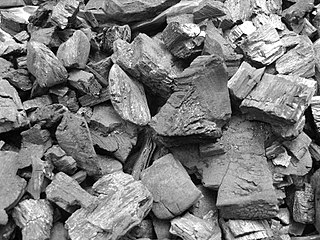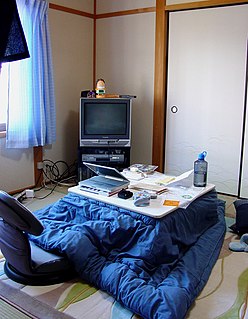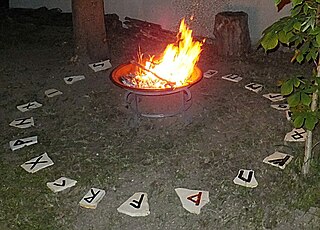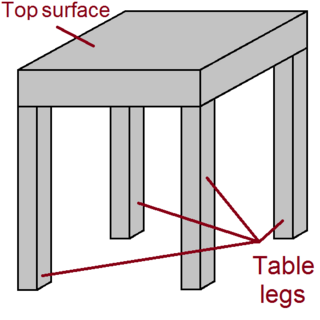A foot stove consists of a wooden box which is open on one side, with holes or a slab at the top. In it, a bowl made of pottery or metal with burning charcoal was placed. The feet were positioned on top of the stove to become warm. By putting a blanket or clothing on the legs the heat could be isolated and the lower legs were heated.

Charcoal is the lightweight black carbon and ash residue hydrocarbon produced by removing water and other volatile constituents from animal and vegetation substances. Charcoal is usually produced by slow pyrolysis — the heating of wood or other substances in the absence of oxygen. This process is called charcoal burning. The finished charcoal consists largely of carbon.
Contents
Foot stoves were used in Northern Germany, the Netherlands, and the United States. [1]
Northern Germany is the region in the northern part of Germany which exact area is not precisely or consistently defined. It varies depending on whether one has a linguistic, geographic, socio-cultural or historic standpoint. The five coastal states are regularly referred to as Northern Germany. Though geographically in the northern half of Germany, Westphalia, Brandenburg, and the northern parts of Saxony-Anhalt are rarely referred to as Northern Germany and instead are almost always associated with Western Germany and the historic East Germany respectively.

The Netherlands is a country located mainly in Northwestern Europe. The European portion of the Netherlands consists of twelve separate provinces that border Germany to the east, Belgium to the south, and the North Sea to the northwest, with maritime borders in the North Sea with Belgium, Germany and the United Kingdom. Together with three island territories in the Caribbean Sea—Bonaire, Sint Eustatius and Saba— it forms a constituent country of the Kingdom of the Netherlands. The official language is Dutch, but a secondary official language in the province of Friesland is West Frisian.

The United States of America (USA), commonly known as the United States or America, is a country composed of 50 states, a federal district, five major self-governing territories, and various possessions. At 3.8 million square miles, the United States is the world's third or fourth largest country by total area and is slightly smaller than the entire continent of Europe's 3.9 million square miles. With a population of over 327 million people, the U.S. is the third most populous country. The capital is Washington, D.C., and the largest city by population is New York City. Forty-eight states and the capital's federal district are contiguous in North America between Canada and Mexico. The State of Alaska is in the northwest corner of North America, bordered by Canada to the east and across the Bering Strait from Russia to the west. The State of Hawaii is an archipelago in the mid-Pacific Ocean. The U.S. territories are scattered about the Pacific Ocean and the Caribbean Sea, stretching across nine official time zones. The extremely diverse geography, climate, and wildlife of the United States make it one of the world's 17 megadiverse countries.
- Old foot stove from Northern Germany
- Stove from the Netherlands
- A foot stove from around 1930



















